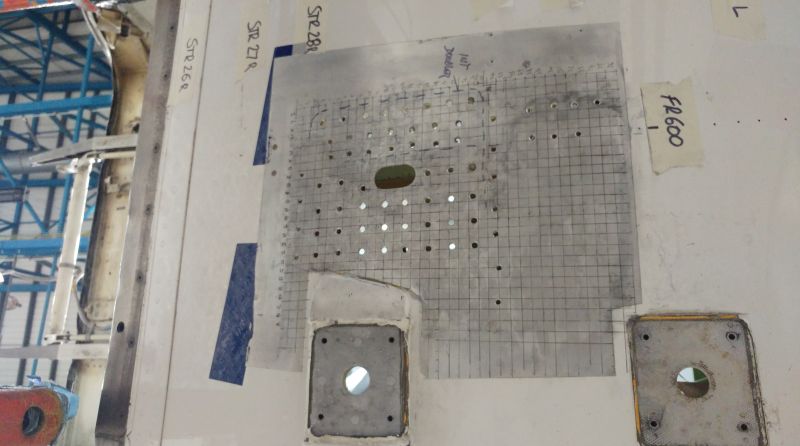Evaluating aircraft structural damage on a physical inspection against a damage map overview.
The location of the damage is the first item to check, this ensures you can pin point the damage and should the reflect accurate location on the aircraft – this should not be a vague zone (exterior fuselage skin between frames 14-15 and stringers L 12 – L 13 is not acceptable) and typical locations could detail Body Station / Frame / Stringer / Buttock Line etc.
The damage should be noted as a specific “type” and typical examples include “Dent”, “Scratch”, “Delamination”, “Gouge”, “Crack” or other such entry entries. This is an important part of the record, as the limits for damage and required actions can differ based on this assessment.
Damage types are covered in the structural manual for the aircraft so you can check the determination against the damage if required.
Dimensions then are the next item to check – make sure that the required dimensions are recorded and accurate in order to make the assessment.
An entry such as in limits IAW SRM… is no good unless it is qualified with the dimensions used to make the assessment.
Length, Width, Depth, Thickness of Skin are typically what you might look for depending on aircraft; often dimensions are used to create a damage ratio and then this value is used to determine serviceability of minor damage.
Inspections are then required to determine the condition of the damage which will often include visual and also specialised testing often (NDT – Non-Destructive Testing) such as HFEC (High Frequency Eddy Current) or Ultrasonic etc.
The repair file should contain the certified paperwork often referred to as dirty fingerprints (DFP) for all the different repairs.
Some repairs will then as per last week’s post have a repair category assigned which means there might be additional inspections required to maintain airworthiness.
This is an overview only and there are of course additional considerations including location of damage vs repair applied and its applicability, repair manual revision used (permitted repairs can change over time), vicinity of other damage etc.
The structural evaluation is a high priority task during a transition as the time to address any concerns can be prolonged depending on the required maintenance!
Have structural evaluations ever delayed or caused issues during a lease transition for you?
Stay up-to-date with all our aviation news and information:
- Click Here to sign up to the IALTA newsletter.
- Follow us on LinkedIn:
- Learn more at www.ialta.aero/courses
#aircraftleasing #aircraftmanagement #aircraftengineer #onlinelearning #ialta #aircraftsales #aircraftparts #aircraftmaintenance
